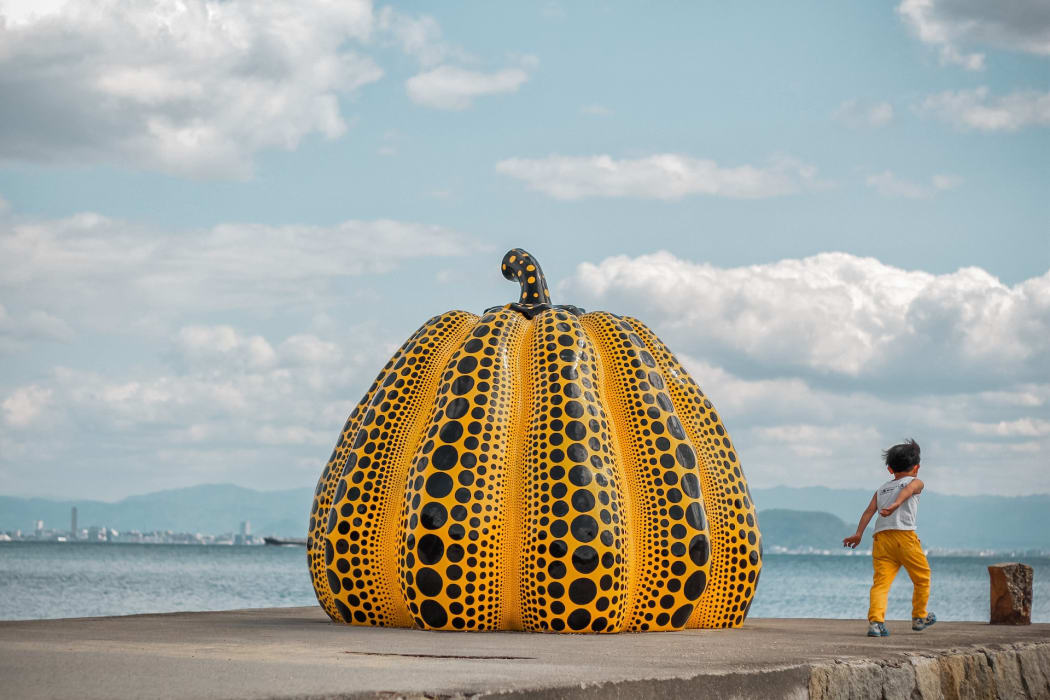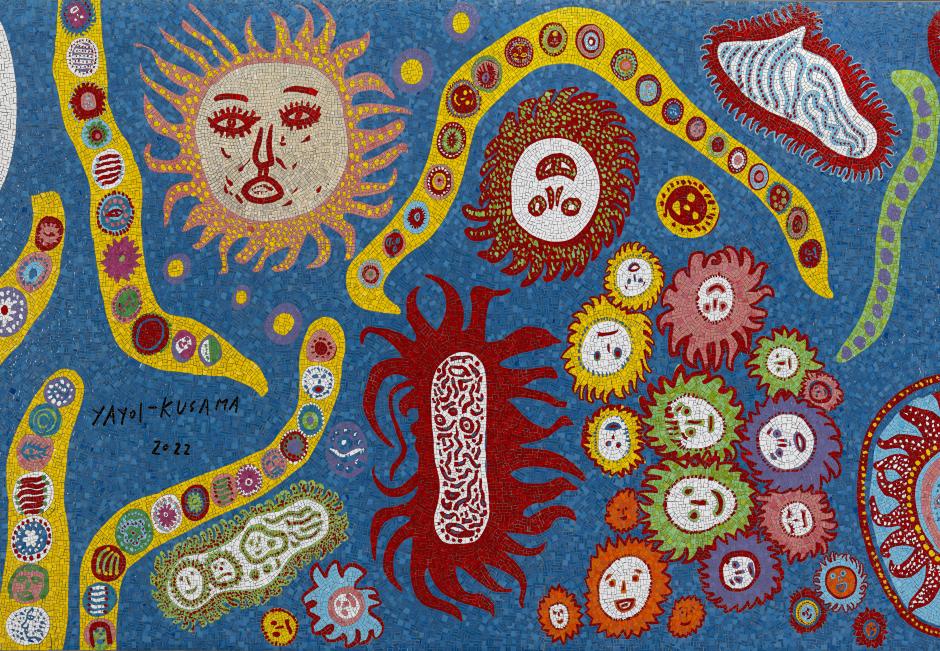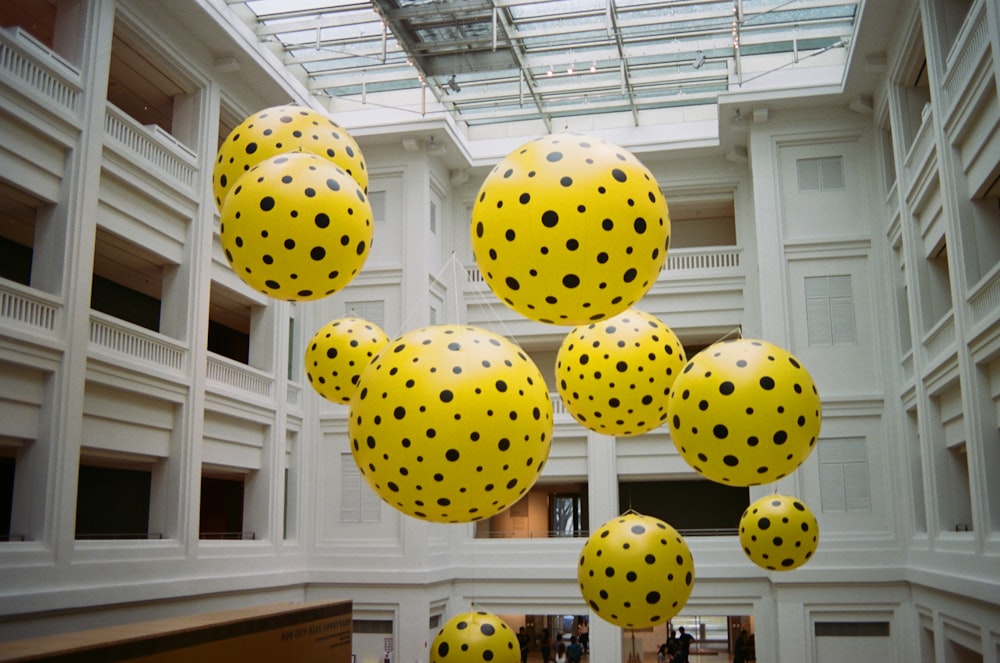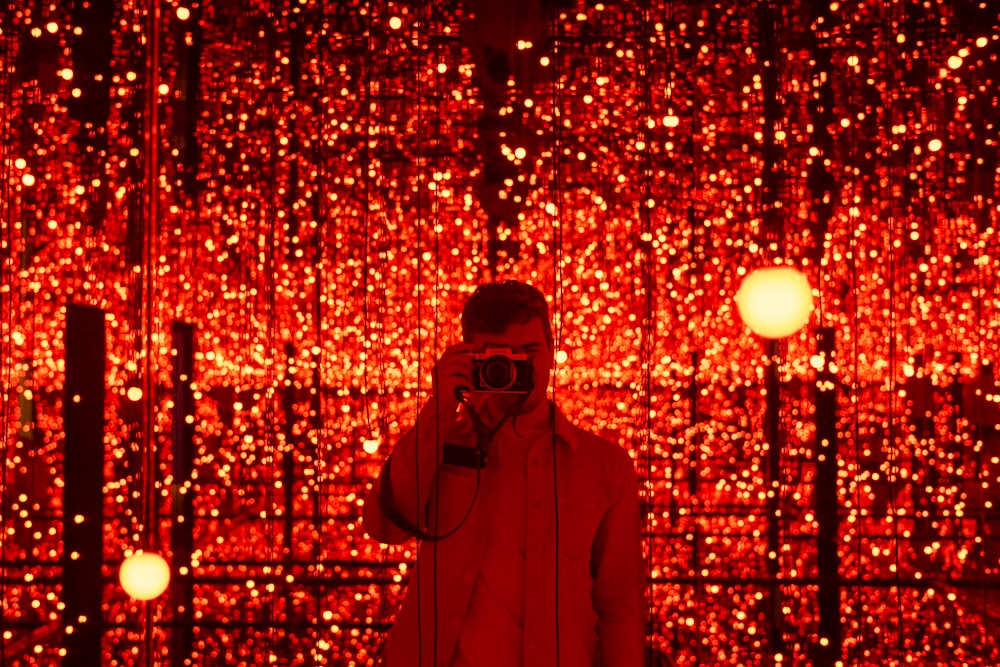
Kusama developed a passion for art at an early age and began studying traditional Japanese painting during her adolescence. However, she soon realised that her artistic vision extended beyond the confines of traditional techniques. In the late 1950s, Kusama moved to the United States, settling in New York City, which was at the epicentre of the global art scene.
During this time, Kusama's work began to evolve, embracing avant-garde movements such as Conceptual Art, Pop Art, and Minimalism. She created immersive installations and sculptures characterised by repetitive patterns, vivid colours, and the iconic polka dots that would become her signature motif. Kusama's art often delves into themes of infinity, obliteration, and the exploration of personal identity.
Throughout the 1960s, Kusama gained recognition for her provocative and boundary-pushing art. She organised groundbreaking happenings and performances, often involving naked participants painted with polka dots. Her public installations, such as the "Narcissus Garden" consisting of hundreds of mirrored balls, challenged the conventional notions of art and space.
However, the intense pressure and struggles with her mental health led Kusama to return to Japan in the early 1970s. She voluntarily admitted herself to a psychiatric hospital, where she has resided ever since. Despite her confinement, Kusama's creative spirit remained undeterred. She continued to produce art, transforming her studio and the surrounding landscape into an immersive artistic environment.
In the late 1980s, Kusama's work regained international attention, and she began exhibiting extensively in Japan and around the world. Her installations, such as the celebrated Infinity Mirror Rooms, garnered critical acclaim and captivated audiences with their mesmerising illusions of endless space.
Her art combines traditional techniques- a reference to her early career - with her unique artistic style and concepts. With a background in painting she continues to use this traditional medium in her artwork. She often incorporates painting into her installations, sculptures, and works on canvas. Her paintings often feature vibrant colours, repetitive patterns, and the iconic polka dots that have become synonymous with her style.
Kusama uses a variety of materials, including traditional materials like bronze and wood within her sculptures that often feature organic and biomorphic shapes, which she manipulates to create visually captivating and intriguing forms. These sculptures can range in size from small to monumental and can be exhibited both indoors and outdoors.
Her works are not only visually textured, but through the collage techniques that she uses she explores layering and juxtaposing elements to create visually dynamic and textured pieces.
.jpg?mode=max?w=780)
Kusama has explored printmaking techniques, such as screenprinting and lithography, to reproduce her artwork on various surfaces. These techniques enable her to replicate her patterns and designs, making her work accessible to a wider audience through prints and multiples.
While not a traditional technique in the strictest sense, performance art has been a significant part of Kusama's practice. She has staged numerous performances throughout her career, often involving her body and objects adorned with polka dots. These performances are documented through photography and video, becoming a vital aspect of her artistic expression.
Her popularity has increased dramatically in the 2000s which can be attributed to several factors. Kusama's art is instantly recognizable and distinct. Her use of vibrant colours, repetitive patterns, and iconic polka dots creates visually stunning and immersive experiences for viewers. The combination of her signature style, unconventional materials, and innovative installations, such as the Infinity Mirror Rooms, has captured the attention and fascination of a wide audience.
Her work has gained significant traction on social media platforms, particularly Instagram. Her visually striking installations and sculptures lend themselves well to sharing and viral dissemination. People are drawn to capturing and sharing their experiences within Kusama's art, amplifying her popularity and reach to a broader audience. Kusama's installations provide visitors with unique and memorable experiences. The Infinity Mirror Rooms, in particular, offer a sense of awe, wonder, and a chance for introspection. These immersive environments provide captivating photo opportunities, attracting people seeking visually stunning and shareable content.
Kusama's collaborations with popular brands, fashion designers, and musicians have helped propel her into mainstream culture. Her partnership with Louis Vuitton, for example, resulted in the production of a highly coveted collection featuring her distinctive polka dots. This intersection of art, fashion, and popular culture has broadened her appeal to a wider audience.
Throughout her career she has played a vital role in the development of avant-garde art movements such as Conceptual and Pop Art. Her innovative approach to art, characterised by bold experimentation and unconventional materials, challenged traditional artistic boundaries.

Kusama's artwork often explores themes of mental health, self-obliteration, and personal identity. Through her use of repetitive patterns and polka dots, she expresses her experiences with anxiety, obsession, and the search for selfhood. Her willingness to address these personal struggles through her art has resonated with many people and has contributed to discussions around mental health.
Discover our selection of Yayoi Kusama prints for sale and contact our gallery via sales@andipa.com or call +44 (0)20 7589 2371 for further information and current availabilities.

